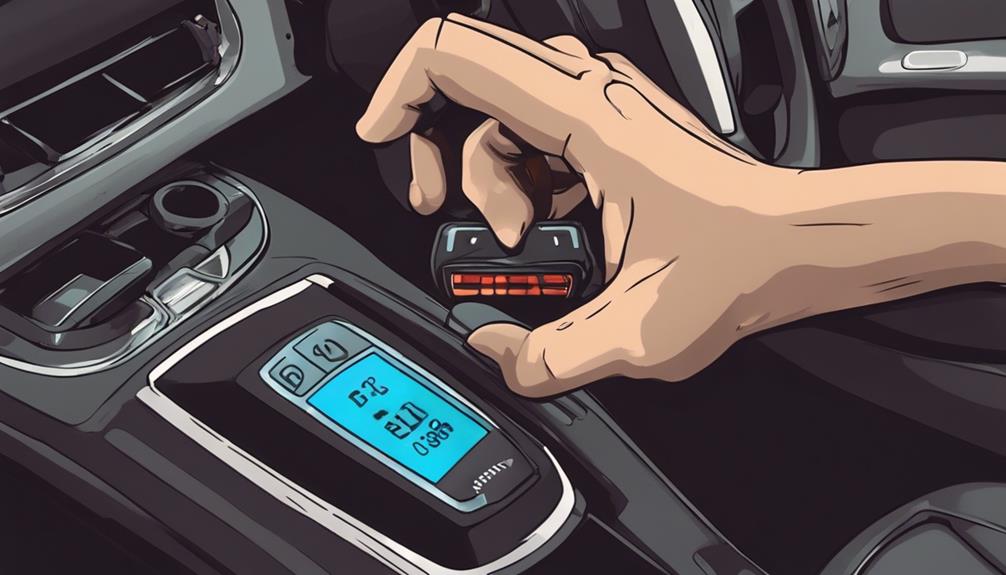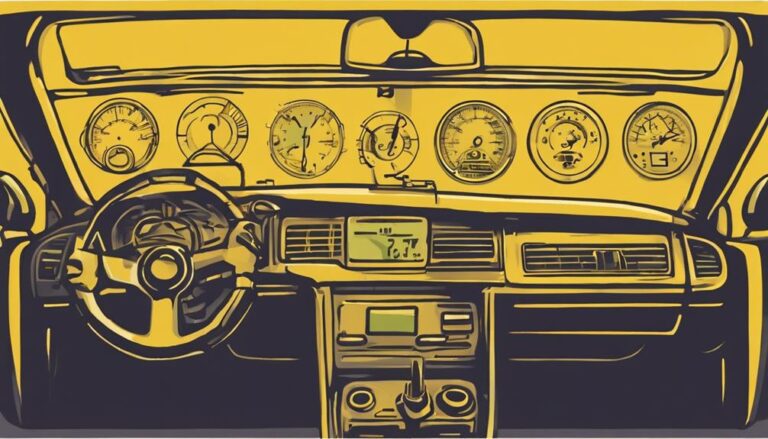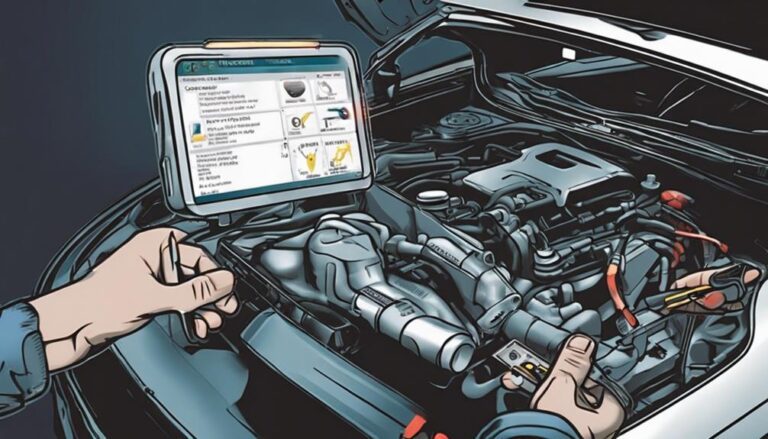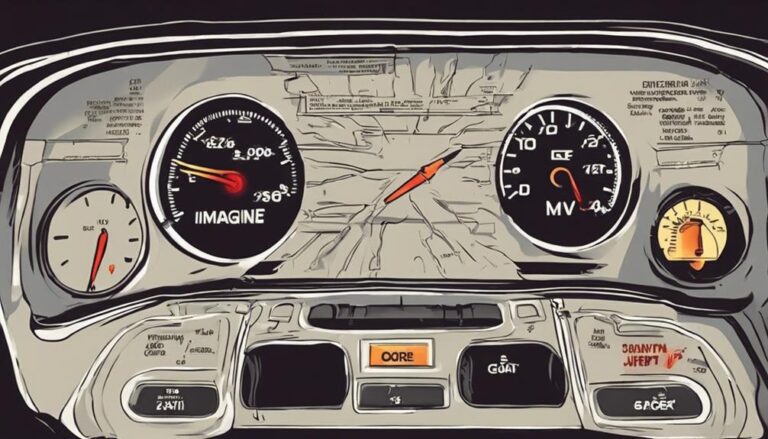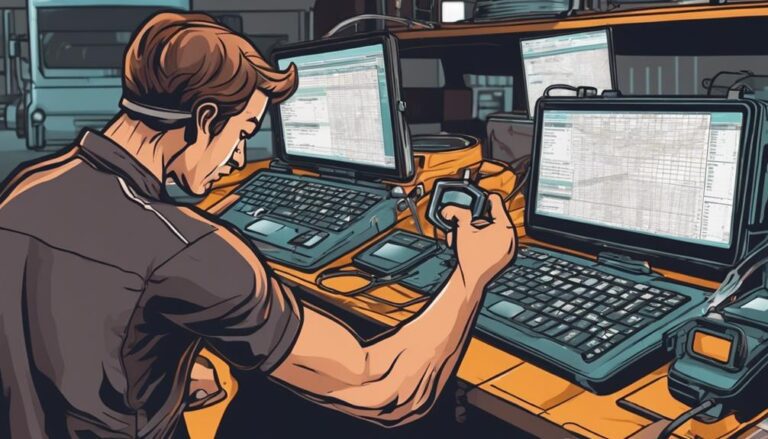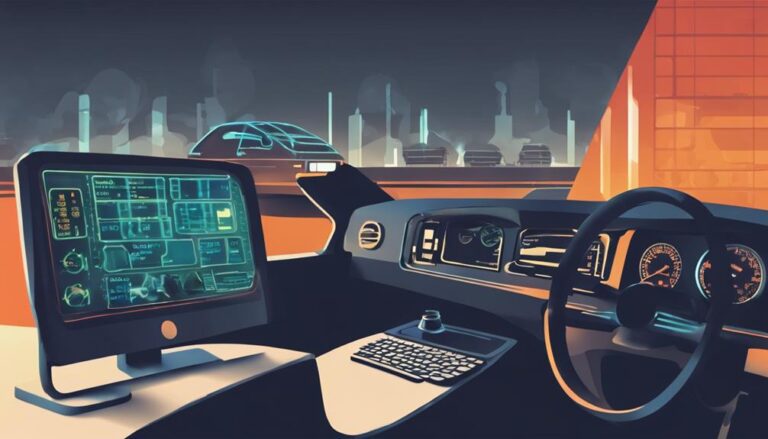What Are Effective Check Engine Light Reset Methods?
Did you know that according to a recent survey, nearly 10% of all vehicles on the road have their check engine light illuminated at any given time?
Understanding effective check engine light reset methods is crucial for maintaining your vehicle's health and performance. From simple driving techniques to utilizing advanced diagnostic tools, there are various ways to tackle this common issue.
Before you rush to reset the light, make sure you stick around to discover the most efficient and safe methods to address the underlying problem and avoid potential damage to your vehicle.
Key Takeaways
- Drive or cycle ignition for minor issues; use OBD2 scanner for accurate diagnostics; perform battery/ECM hard reset for complex problems; check gasoline cap for simple fixes.
Drive to Clear the Light
To clear the check engine light by driving, ensure you drive normally for up to 30 miles as most onboard computers recheck the issue multiple times before automatically turning off the light. This method is effective for resolving minor issues related to vehicle diagnostics and engine maintenance. By driving the vehicle, the onboard computer system has the opportunity to conduct various self-diagnostic checks to verify if the problem has been rectified. It allows the system to monitor the different sensors and components, ensuring that they're functioning within the normal parameters.
Driving the vehicle for a sufficient distance can be a practical approach to reset the check engine light, especially for minor issues that might've triggered the warning. This method is considered a form of engine maintenance that can potentially resolve the underlying problem causing the light to illuminate. However, for more serious issues, it's advisable to complement this method with other reset procedures or seek professional assistance to address the root cause effectively.
Utilize an OBD2 Scanner
If you encounter persistent check engine light issues after driving to clear the light, consider utilizing an OBD2 scanner to pinpoint the specific fault codes triggering the warning. OBD2 scanners are essential diagnostic tools designed to read and clear engine fault codes efficiently. These scanners plug into the OBD port of vehicles, usually situated beneath the steering column. They range from basic code readers to advanced diagnostic tools with live data capabilities, offering comprehensive insights into your vehicle's health. By using an OBD2 scanner, you can identify the exact issues causing the check engine light to illuminate, enabling you to address them effectively. Clearing the fault codes with the OBD2 scanner can reset the check engine light once the underlying problem is resolved.
| OBD2 Scanner Benefits | Troubleshooting Tips |
|---|---|
| Reads engine fault codes accurately | Pinpoints specific issues |
| Clears fault codes efficiently | Helps address underlying problems |
| Offers insights into vehicle health | Reset check engine light after resolution |
Cycle Ignition On and Off
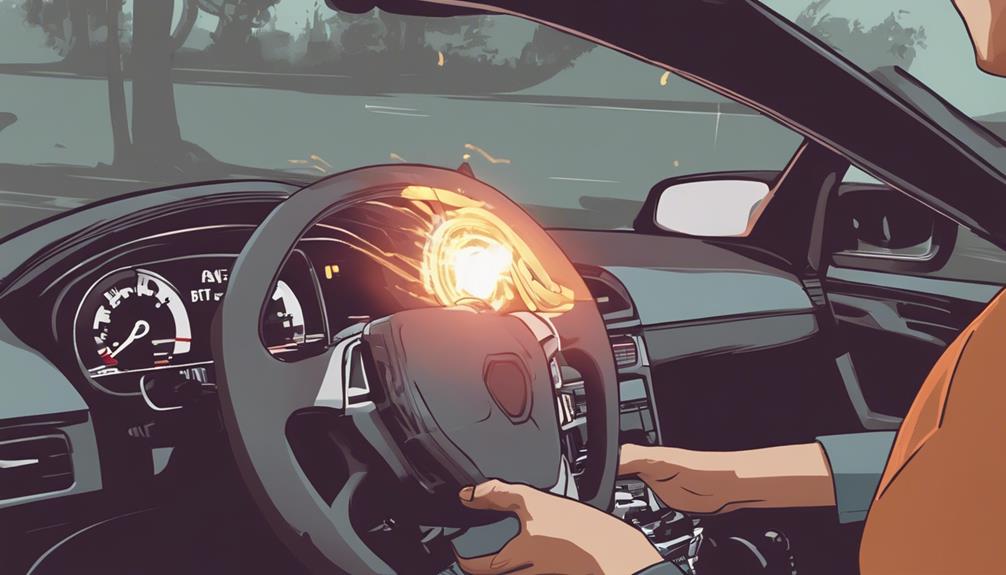
Cycling the ignition on and off 3-4 times can potentially reset the check engine light. This method, known for its simplicity, involves a specific sequence: turning the key on for 1-2 seconds, then off for 1-2 seconds, and repeating this process multiple times.
Here are some insights into the benefits of this ignition cycle approach:
- Quick Reset: It's a rapid reset technique that can effectively clear minor system glitches.
- Temporary Solution: While it may not address underlying issues causing the light to illuminate, it can serve as a temporary reset.
- Diagnostic Aid: If the check engine light persists even after cycling the ignition, it's advisable to check for error codes or seek assistance from a professional mechanic for further diagnosis and resolution.
This method can be a handy tool in your arsenal for addressing the check engine light, offering a straightforward way to potentially reset the indicator and gain a fresh start.
Battery/ECM Hard Reset
Upon disconnecting the positive battery cable for 15 minutes, the Engine Control Module (ECM) can be reset, effectively clearing the check engine light. This process allows the ECM to relearn values from sensors and adapt to your driving habits. However, it's crucial to note that this reset may also clear other settings in the vehicle, such as radio presets, so be prepared to reconfigure those post-reset.
When reconnecting the battery, consider turning the key to the ON position three times. This action helps clear any remaining stored data and aids in resetting the check engine light. Additionally, after reconnecting the battery, wait for about a minute to ensure the check engine light turns off as expected. If the light persists, it may indicate a more severe issue that requires further diagnostics.
Check Gasoline Cap

Inspect the gasoline cap for cracks or looseness to address potential triggers of the check engine light. Common gasoline cap issues and solutions include:
- Check for Cracks: Examine the gasoline cap for any visible cracks or signs of wear. Cracks can lead to a faulty seal, causing fumes to leak and triggering the check engine light.
- Tighten Securely: Remove the gasoline cap and securely tighten it back onto the fuel tank. Ensure it clicks at least three times to guarantee a proper seal. A loose cap can result in pressure loss and illumination of the check engine light.
- Regular Maintenance: Perform routine maintenance on the gasoline cap by cleaning it and checking for any debris that could affect its sealing capabilities. Proper gasoline cap maintenance can prevent unnecessary alerts and ensure the efficient operation of your vehicle's emission control system. Remember, a well-maintained gasoline cap is vital for keeping the check engine light at bay.
Frequently Asked Questions
How Do You Reset the Check Engine Light With a Gas Pedal?
To reset the check engine light with the gas pedal, turn the key to ON without starting. Press the gas pedal fully five times in five seconds. Wait for the light to blink, then hold the gas pedal for 10 seconds. Start the engine to confirm the reset.
Can You Reset Check Engine Light Without Disconnecting Battery?
You reset the check engine light without disconnecting the battery by utilizing an OBD scanner method or professional reset services. These options provide efficient solutions to address the issue without unnecessary disconnections.
Will Disconnecting Battery Reset Codes?
Disconnecting the battery will reset codes but may not address underlying issues. Diagnostic tools provide accurate data for informed decisions. Professional mechanics offer expertise to analyze and resolve complex engine concerns beyond basic resets.
How Many Restarts Does It Take to Reset Check Engine Light?
To reset the check engine light, you may need to perform 3 to 5 ignition cycles on some vehicles. Each cycle involves briefly turning the key on and off. If the light persists, further engine diagnostics or an OBD scanner may be needed.
Conclusion
In conclusion, resetting a check engine light can be as simple as driving normally for a few days or using an OBD2 scanner to diagnose and clear error codes. Remember to address the underlying issue to prevent the light from coming back on.
With these effective methods at your disposal, tackling the check engine light is a piece of cake – as easy as pie!

